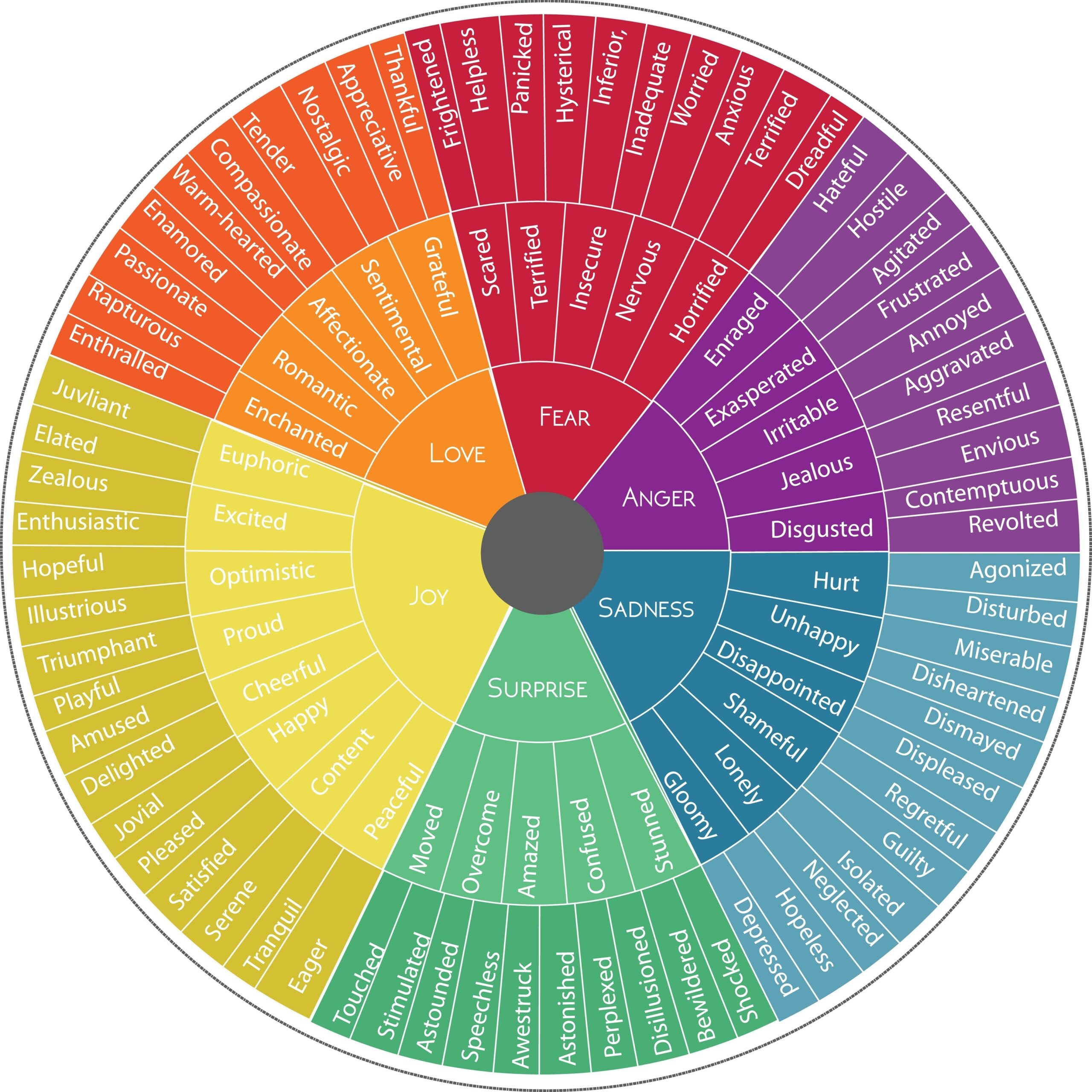Words have always held a special place in my heart. Full of rhythm, history, and an art all their own, words are truly enchanting to me. Learning new vocabulary words is a favorite pastime of mine (especially when I get to use them on the New York Times crossword!). So why is it that when someone asks how I am doing, all I can muster is a “fine”, “okay”, “good”, or “bad?” A flat, automatic, one-word answer with about as much eloquence as a toenail.
We feel all day, every day, and at every moment. Most of the time, however, we unaware we are feeling, much less being able to aptly describe what it is we are experiencing. I use the term “emotional eloquence” to denote the ability to aptly put into words that which is being emoted. Simple? Yes. Effortless? No. The process involves delving deeper than the surface emotion (“scared”), and finding the root sentiment (“rejected”). The “eloquence” comes from the articulation of this root emotion that is that the heart of the surface feeling.
In the same way we “auto-pilot” our thoughts, we tend to “auto-pilot” our emotions. Feelings come and go just like our thoughts. It is only when we are wracked by emotion (be it good or bad), do we snap into awareness of what we are feeling. In the case of difficult emotions, however, we become engulfed in the thralls of the upset, making it that much harder to find our path back to equilibrium.
“Name it to tame it” is the catch-phrase coined by Dan Seigel, a psychologist who purported using identification of strong emotions as a method to diffusing them. Identification occurs when you are able to step back from the emotion and “look” at it. Taking this a step further, we should look at these feelings without judgment or criticism, but with curiosity – holding space for our emotions and giving them a safe space for their expression. Additionally this “stepping back” allows you to fully evaluate what it is you are feeling and proceed in a much more methodical manner. Naming actually disrupts the amygdala (responsible for “flight or fight responses) for those who struggle with anxiety.
There are no right and wrong feelings. Feelings are. They come and they go. Being overly-critical of these moments will only serve to damage our relationship with our feelings. The same holds true when hearing others speak of their emotions. “I am scared” should not be said in shame, but with head held high. To be able to express our vulnerability with one another will reinforce our connections and deepen our relationships.
Marshall Rosenberg, the founder of non-violent communication, built his movement on the cornerstone of properly expressing oneself. Only when we can accurately convey our needs, do they have the opportunity of actually being met. When you speak, your words can either be alienating (violent) or connecting (non-violent). It is important to be specific and Rosenberg touted the necessity of building a feeling vocabulary.
In expressing our feelings, it helps us to use words that refer to specific emotions rather than words that are vague or general. For example, if we say “I feel good about that”, the word good could mean happy, excited, relieved, or a number of other emotions. Words such as good and bad prevent the listener from connecting easily with what we might actually be feeling. (Rosenberg, Marshall. NonviolentCommunication, pg. 43).
It is the difference between walking into your child’s messy room and saying “your room is a pig sty” or accurately accounting that which is before you and stating “there are 4 clothing items that need to be put into the hamper.” The former statement will probably be met with eye-rolls and defensiveness, while the latter is a statement of fact and much less negatively charged.
While it is hard to be so cognizant of our language all day long, I ask you to take moments throughout the day to check in with yourself and find out where you are emotionally. And don’t let yourself off the hook with the one-word retorts!
Additionally, start asking different questions – instead of “how was your day?”, I now ask “how are you feeling today?” And I do not accept one word answers from others either. Especially with my girls, I press them for more. I let them know they are safe to feel whatever manifests and they should not judge themselves (or others) on those emotions.
To help them grow their emotional vocabulary, I have printed and laminated “feeling wheels” (https://cdn.gottman.com/wp-content/uploads/2020/04/The-Gottman-Institute_The-Feeling-Wheel.pdf). The innermost level of these wheels are filled with our general feelings. As you move toward the outer edges, the general feelings get deconstructed into very specific emotions. With my girls, we start in the middle and work our way out until we arrive at the precise emotion. It is a simple way for both them and me to figure out what is going on within.
My hope is that as our emotional awareness grows, our emotional vocabulary will follow. And as we employ these techniques, we can impart them to others. Through these acts our connection with ourselves and others will grow and our emotional eloquence will flourish.

Comments: